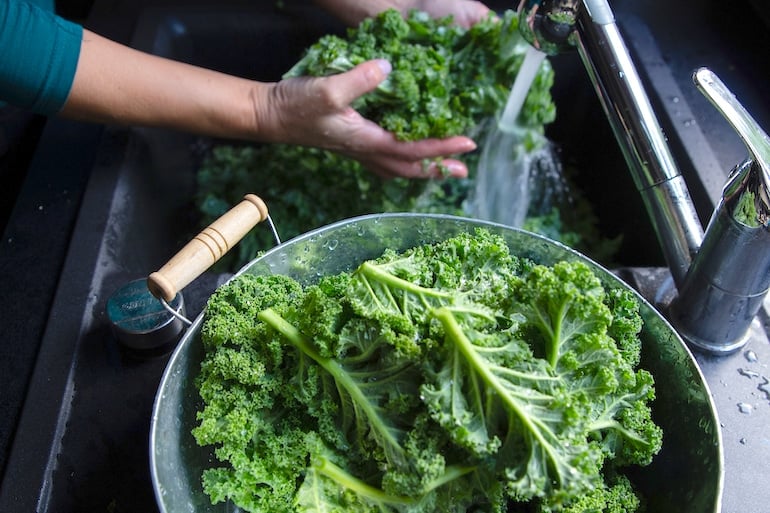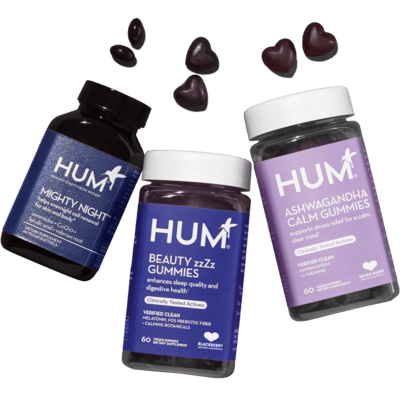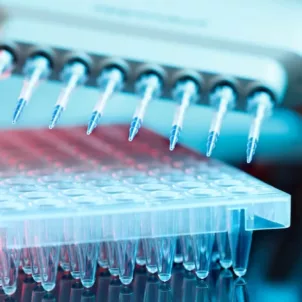I’ve read my fair share of diet books. But never have I read anything as thorough in its research and encouraging in its messaging than How Not to Diet by Dr. Michael Greger, MD, FACLM.
“Diets don’t work by definition,” he explains, simply. “Going on a diet implies that, at some point, you will go off the diet. Short-term fixes are no match for long-term problems. Lifelong weight control requires lifelong lifestyle changes.”
But for many of us, sorting out which changes to make can be an exhausting endeavor. That’s where How Not to Diet comes in. Dr. Greger’s new book doesn’t just look at the research. It researches the research. It meticulously evaluates the data and comes to its own conclusions by doing what virtually no one else bothers to do: cross-examining and citing the results from almost five thousand different studies. Only then does he definitively say how we should eat for optimum health. For a taste, here are our five biggest takeaways from reading How Not to Diet with insights from Dr. Michael Greger, himself.
5 Lessons From How Not to Diet with Dr. Michael Greger
1. A calorie is not just a calorie
“In medical school, we were taught that a calorie from one source is just as fattening as a calorie from any other source,” Dr. Greger recalls. “Biochemically, a calorie is a calorie, but in real life, far from it.”
For example, he shares, one hundred calories of chickpeas impacts the body differently than 100 calories of chicken, or 100 calories of chiclets, for that matter. Why? Because these foods are all made up of very different things. Different ingredients have different effects on absorption, appetite, our microbiomes, and more.“Different foods rev up or down your appetite. And it’s not what you eat, but what you absorb,” Dr. Greger shares. “Fiber, for example, in whole intact plant foods can trap calories and flush them out the other end.” But more on that later…
“Even if you eat and absorb the same number of calories, a calorie may still not be a calorie,” he continues. “The same number of calories eaten at a different time of the day or after different amounts of sleep can translate into different amounts of body fat. Even the exact same foods eaten differently can have different effects. So, it’s not only what we eat but also how and when.”
2. Research supports a whole-food, plant-based diet
When it comes to what to eat to lose weight, one way of eating shines through all the research. “Indeed, we have experimental confirmation: A whole-food, plant-based diet was found to be the single most effective weight-loss intervention ever published in the medical literature,” Dr. Greger says. “[It’s been] proven in a randomized controlled trial with no portion control, no calorie counting, no exercise component: the most effective ever.” Unsure what that looks like? He elaborates: “We should eat real food that grows out of the ground, natural foods that come from fields, not factories, [from] gardens, not garbage, a diet centered around whole plant foods—and it is completely within our control to do so.” In his book, Dr. Greger reports seventeen key factors that encourage weight loss and how a whole-food, plant-based diet perfectly supports these guidelines. “The foods we eat and, in fact, our meals and entire dietary patterns should be anti-inflammatory, clean from industrial pollutants, high in fiber and water, and low in high glycemic and addictive foods, added fat and sugar, calorie density, meat, refined grains, and salt. They should also be low insulin index, friendly to our friendly flora, particularly satiating, and rich in fruits and vegetables, as well as legumes.”3. Fiber is your friend
Forget counting carbs and protein intake. As it turns out, what you really need to be paying attention to is your fiber intake.“Less than 3 percent of Americans get even the recommended minimum adequate intake of fiber,” says Dr. Greger. “On average, we only get about 15 grams a day. The minimum daily requirement is 31.5 grams, so most of us are getting less than half the minimum. Men are particularly deficient.”
This is bad news, he tells us, as dietary fiber intake can help protect us against the risk of diabetes, metabolic syndrome, high cholesterol, high blood pressure, high blood sugar, and much more.“In fact, if I had to give just one piece of advice to best sum up my recommended weight-loss boosters, it would be about fiber: Wall off your calories,” Dr. Greger emphasizes.
To understand, we have to look at the cellular level. Animal cells have easily digestible membranes, Dr. Greger explains. This allows our gut to easily access the calories in animal products. By contrast, fiber acts as an indigestible physical barrier in plant cell walls and traps more calories in. That means when we eat plant-based foods, more calories move through our system instead of being stored away as fat for later.
This is also where the “whole food” part of a whole-food, plant-based diet becomes crucial. Dr. Greger shares that processing plant foods into things like fruit juice, sugar, refined grains, and even flour destroys the cellular structure and cracks open cell walls. Once again, this renders the calories too easily accessible for our bodies. “When you eat structurally intact plant foods, you can chew all you want but you’ll still end up with calories completely encapsulated by fiber,” Dr. Greger explains. “[This] then blunts the glycemic impact, activates what’s called the ileal brake that dials down appetite, and delivers sustenance to your friendly flora.” Feeding this friendly flora encourages our bodies to produce short-chain fatty acids that absorb from the colon into our bloodstream. After circulating throughout our body, the short-chain fatty acids then reach the brain to signal that we are full. Consequently, this tells our body to decrease appetite and boost metabolism.“When diets are deficient in fiber, we are in effect starving our microbial selves. So, try to make sure as many of your calories—whether from protein, carbs, or fat—are encased in cell walls. In other words, get as many of your calories from whole, intact, plant foods.”

4. In addition to what you eat, when you eat matters
Enter chronobiology. The scientific term for optimizing your body’s natural daily rhythms.“Chronobiology is the study of how our bodies’ natural cycles—mental, physical, and emotional—are affected by the rhythms of the sun, moon, and seasons,” Dr. Greger says. For weight loss, we can learn a lot about how the time of day affects our digestion. “Interestingly, because of our circadian rhythms, morning calories don’t appear to count as much as evening calories.”
To work with your body’s natural rhythm, he offers this expression to keep in mind: “Breakfast like a king, lunch like a prince, dine like a pauper.” In other words, consider making breakfast your largest meal of the day and dinner the smallest. It turns out eating the same number of calories in the morning is less fattening than eating the same number of calories in the evening. But why?“One reason is that more calories are burned off in the morning due to diet-induced thermogenesis, the amount of energy the body takes to digest and process a meal, given off in part as waste heat,” Dr. Greger says. “When people are given the exact same meal in the morning, afternoon, and at night, their body uses up about 25 percent more calories to process the meal in the afternoon than at night and about 50 percent more calories to digest it in the morning. That leaves fewer net calories in the morning to be stored as fat.”
5. even small tweaks daily can make a difference
While adopting a whole-food, plant-based diet as a baseline should offer results alone, in his book, Dr. Greger also offers twenty-one tweaks you can incorporate into your daily routine to support additional weight loss. Here are the top three tweaks Dr. Greger suggests prioritizing:- Drink two cups of cold water before each meal to help boost your metabolism.
- Preload before meals with “negative calorie foods.” This includes an apple, light green soup, or salad, containing fewer than one hundred calories per cup. Doing so will satiate you before the main course, decreasing the likelihood of overindulging in higher-calorie foods.
- Fast after 7:00 PM. “The fewer calories after sundown, the better,” Dr. Greger affirms.









